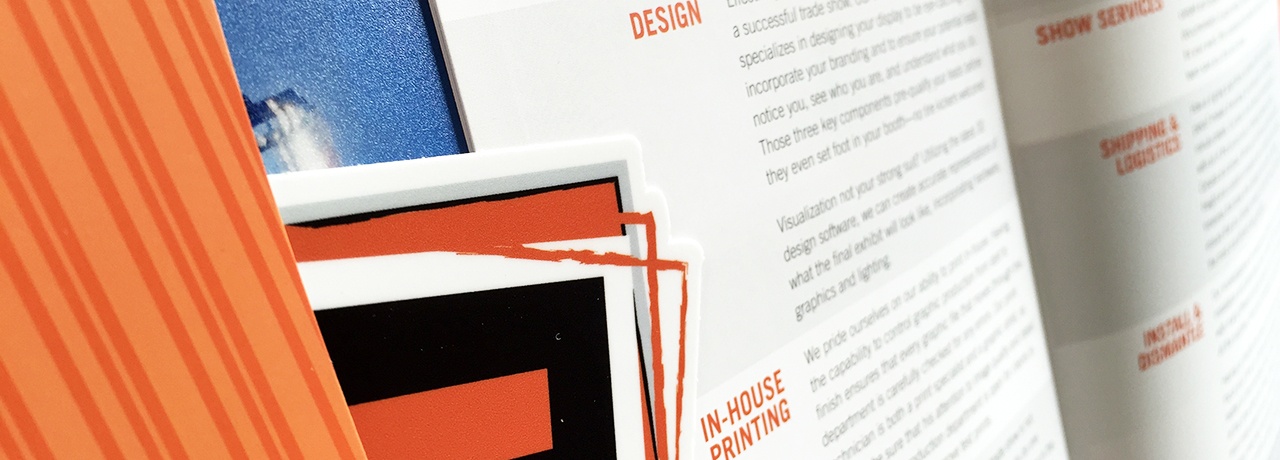- Home
- Blog
Portable vs Modular - Which display style is right for you?
Posted by Tracey Moore | Topics: Insider, Knowledge Base, Portable, Modular Displays | on Jul 15, 2021 9:04:00 AM

When clients consider which type of display suits their needs best, the discussion of portable vs. modular often comes up. The word "modular" is often used in the trade show industry, but many newbies don't exactly understand what that means regarding an exhibit.
There is often confusion about how these two types of displays vary from one another. I understand the confusion because they have a few similarities compared to traditional custom-built displays.
But, there are some SIGNIFICANT differences that one must consider when deciding which style is the best fit for you or your company. So, I'm here to shed a little light on those differences hoping that it helps you make a more informed decision.
TRANSPORTATION
Transportation is a big deal and worth considering when you have to move your exhibit from show to show many times over. Portable displays win the "easiest to transport" title by a long shot. Systems such as banner stands or pop-ups fit into one case that will come with either a shoulder strap or wheels to help you move around. They can be thrown in the back of your car or taken on an airplane with you. You can even fit some banner stands in your suitcase! If you decide to ship your display using FedEx or UPS, the cost of shipping and material handling at the show will be a small percentage of your overall trade show costs.
On the other hand, modular displays such as Octanorm, H-Line, or BeMatrix can weigh hundreds to thousands of pounds. There is no way the airlines are going to overlook that overweight baggage. In addition, most modular displays are packed in 4ft x 8ft wooden crates. They require fewer crates than a custom build, but there will most likely still be one or two crates that need a forklift to move. Because there is so much more exhibit to handle, they obviously have higher shipping and material handling costs at the show.
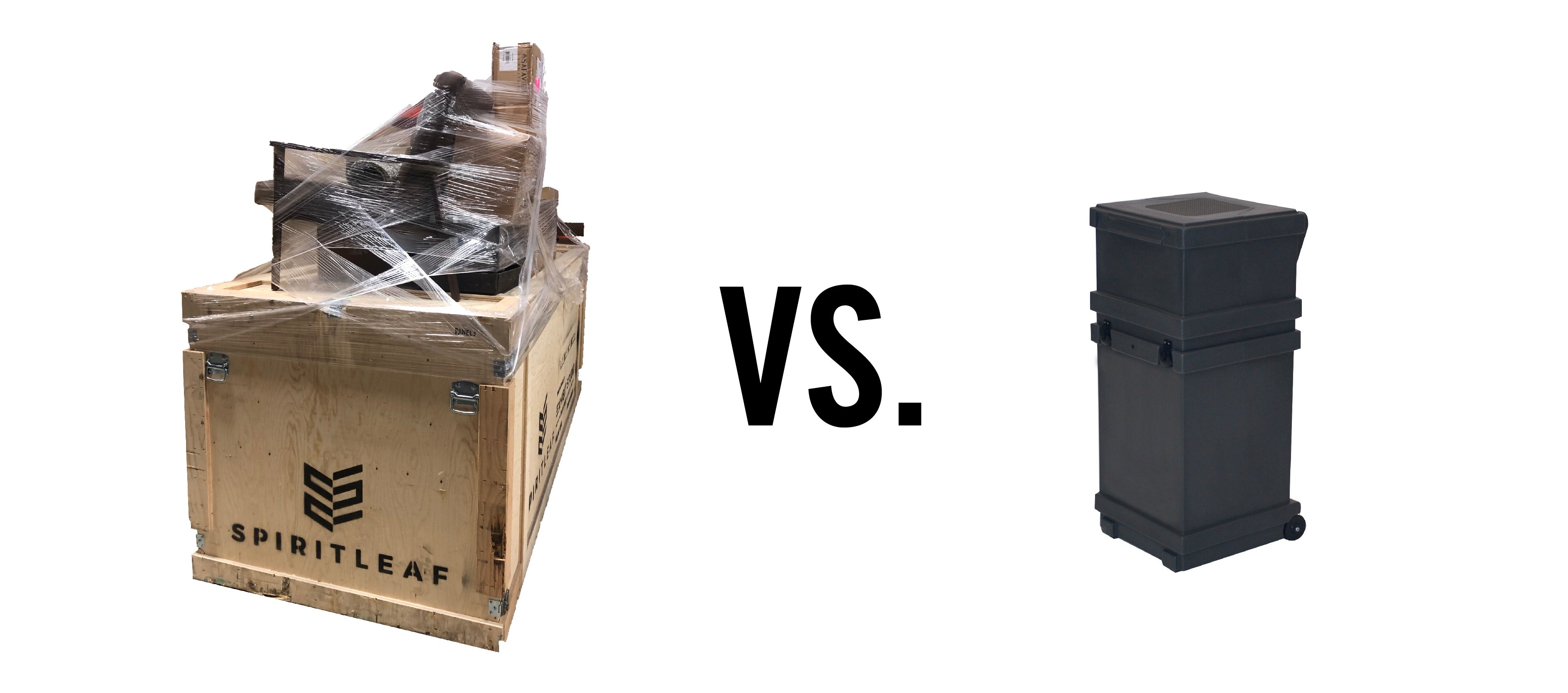
RE-CONFIGURABILITY
Portable displays may be transportable, but they are not all that reconfigurable. They are usually pre-manufactured to be a particular height, width, and shape. You can always add more banner stands, pop-ups, flags, or podiums to fill the space you're exhibiting, but you can't change their shape. One exception that I can think of allows you to combine pop-up displays to use them separately in a 10x10 space or combined in a 10x20 area. Other than that, there is just simply adding or subtracting elements of your design to help things fit the space you're inhabiting, which is always a good option.
Contrasting that, you can have a modular exhibit designed to fit a wide variety of booth spaces. Many companies exhibit at several shows per year, and they don't always book the same booth size or shape. So, if you need an exhibit that can shift between 10x10 and 10x20 or fit large island booth spaces, then a modular display can be a great option. Modular displays are a little like Lego blocks in the way that you can use the same pieces to create a variety of different layouts. The best part is when it comes time to change your exhibit's design, you can often reuse elements from your old display to create an entirely new look. For example, you can have the panels you've been using re-covered in brand new graphics and reuse your hardware in a unique shape as well.

EASE OF SETUP
Portable displays are designed to be fast and easy to set up. They can be done by one person, without tools, and set up in 2-30 minutes. Banner stands go up in a flash. Pop-up displays will take you more around the thirty-minute mark. Flags, tents, and fabric displays will be up in a jiff. If you don't want to arrive at the show super early to set up, portable options might be exactly your style.
Modular displays are trickier than portable ones but are lightyears easier than custom-built exhibits. Modular systems come with pre-assembled frames that lock together easily. Your graphic panels will either stay on the frame, or you will put them on after assembling your hardware by simply attaching the Velcro bits. With a simple booth layout and a good set of instructions, it is easy for exhibitors to set the display up themselves, however, it will generally take more than one person. Nothing more than a simple tool like a screwdriver or Allen wrench will be needed to set up. Although as a short person, I do like to bring a step stool! These displays take more time and effort, but they can pay off by creating a unique exhibit that catches attention from down the aisle.
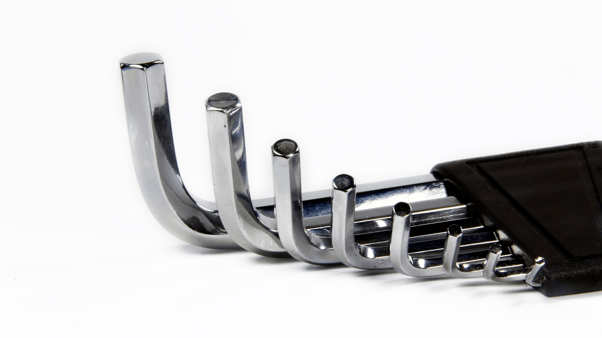
That being said, if there is room in your budget to hire show labor for installation and dismantle, it is a great solution to manage the inconvenience of having to be early or stay late after the show ends. If you've designed a more extensive, complex modular exhibit, you will need tools and ladders to set up. If this is the case, we highly recommend hiring a professional installation team. It will be time and money well spent.
CUSTOMIZABLE
Portable displays provide an opportunity to display to your audience who you are with big, bold graphics. Yet, the options for customizing these exhibits are limited, to be honest. Banner Stands are primarily standard except for the very nifty option of printing on magnetic material and having custom magnets that you can move around the visual field. For pop-ups, there are options like monitor mounts, backlit logos, or internal shelving. Fabric displays can be backlit if you'd like. Other than that, they are a "come as you are" type of display.
Modular trade show displays provide the perfect backdrop to showcase who you are and what you do visually, but they also create an opportunity to go beyond that. You can have your modular exhibit customized to add distinctive elements, such as canopies, meeting spaces, towers, kiosks, shelving, storage, backlighting, etc. Modular displays can marry both the functional and branding requirements a company needs to have a successful trade show experience.
Portable 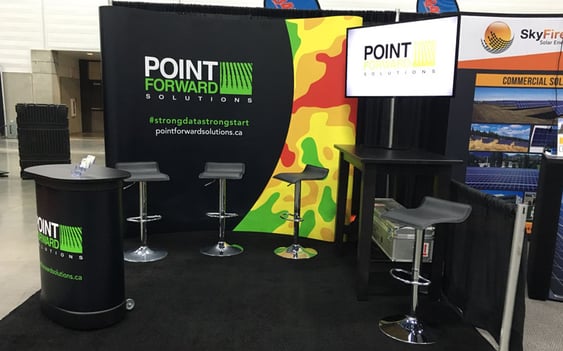
Modular 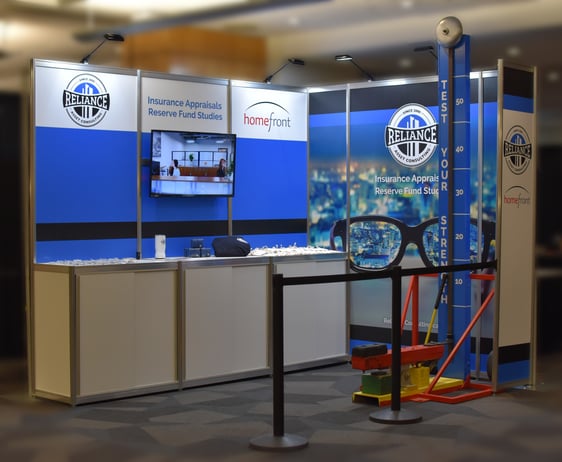
BUDGET
There's not too much more to say other than portable displays are your affordable option, and modular ones are more of an investment. However, if you find yourself investing in a modular exhibit, you can still see substantial cost savings compared to traditional custom exhibits.
STILL NOT SURE?
4 Reasons you should consider a portable display:
1) You have a limited budget.
2) You always exhibit in a 10x10 or 10x20 booth space.
3) A visual graphic representation is enough to promote your brand.
4) You exhibit lots of shows and can't afford the shipping, drayage, installation, and dismantle costs that a modular exhibit would incur.
4 Reasons you should consider a modular display:
1.) You have a healthier budget.
2.) Your company likes to switch up booth size and orientation.
3.) You need customizations like meeting spaces, storage, or counters within your booth.
4.) You've got the time and the team or the money for a more substantial setup.
I hope that this will help inform you enough about the two types of systems that you can decide which one will be best suited to you and your needs. It's hard to cover everything in a blog post, though, so if you need more information, please get in touch, and I'd be happy to chat you through it.
Recent Blog Posts
Subscribe to the blog
Introduce Your Blog
Who's writing it? Why are they writing it? Why should potential readers pay attention to the people writing it? Introduce it in a few sentences, and maybe add a picture of the primary authors.
Posts by Topic
- Knowledge Base (41)
- Trade Show Strategy (26)
- Displays (16)
- Trade Shows (15)
- Insider (14)
- Trade Show (12)
- Graphic Design (10)
- Trade Show Budgets (10)
- Custom Displays (5)
- Graphics (5)
- Covid-19 (4)
- Experiential Activation (4)
- Portable (4)
- Events (3)
- Experiential Marketing (3)
- Fabrication (3)
- Office News (3)
- Portable Displays (3)
- Print and Production (3)
- A/V (2)
- Modular Displays (2)
- Technology (2)
- Trending (2)
- Branded Environments (1)
- Discounts (1)
- Experiential (1)
- Holidays (1)
- Installation (1)
- Pop-up (1)

